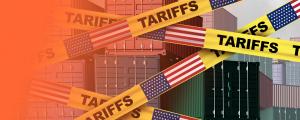Crypto has previously had a reputation for volatility, but right up until the start of this year, Bitcoin and many other projects had been on one of their longest bull streaks ever. From January 2023 to January 2025, Bitcoin gained over 400%, going from just below $17,000 to reach an historic all-time high of $106,490 in late December of last year. However, since then, digital assets have struggled to maintain momentum, and BTC now (03/04) sits more than 20% below its local high at $83,566.
The reasons for the reversal are multifaceted: a natural market correction following two years of gains, general uncertainty as a result of geopolitical conflicts around the world, and economic uncertainty amid a burgeoning trade war between the US and much of the rest of the world. However, as promising signs of a reversal begin to show themselves, many investors are wondering whether the market is heading for a return to growth. In this article, we'll look at all of the positive factors in favour of a crypto resurgence, as well as those that could hold digital assets back in the short term.
No time like the present
As far as recent history goes, many of the current market conditions are extremely favourable to crypto as a whole. Indeed, considering the gains that were made from 2022 to 2024, when interest rates were rising rapidly, and the US regulatory climate was much more adversarial to crypto, the present fundamental factors for digital currencies would suggest a bright future for this asset class. In stark contrast to the days of Gary Gensler's SEC and the Democrats' regulation drive, Trump has promised to make the US the "crypto capital of the world". The new US president has pledged to deregulate the sector, created a Crypto Council headed up by Bo Hines and signed executive orders to initiate a Strategic Bitcoin Reserve and a Digital Assets Stockpile.
On the macroeconomic front, too, things are looking much more positive for risk assets in general, of which crypto is perhaps the riskiest. After Bitcoin and key altcoins made gains throughout a period of severe inflation and extremely hawkish policy from the US Federal Reserve, one can only expect an even more positive environment for these crypto assets as the regulator begins to soften its monetary policy. The CME's FedWatch tool now has the likelihood of a rate cut in June, with Powell promising at least one more this year. Meanwhile, the Fear and Greed Index has also moved into the Extreme Fear segment, which would suggest that the market pessimism is at a maximum. That is a position that tends to precede a strong and sustained move to the upside.
Ongoing instability
Much of the concern surrounding Bitcoin's future price trajectory hinges on the climate of uncertainty the world finds itself in. Conflict continues to rage in both Europe and the Middle East, and now Trump is gearing up for a full-scale trade war with the Liberation Day tariffs that he imposed on Wednesday, 3 April 2025. Former White House Communications Director in Trump's first administration, Anthony Scaramucci, has suggested that the President's trade war has crashed the crypto market and that this recent escalation will lead the country into a "nightmare". This view is seemingly shared by numerous media analysts.
However, the hard data seem to tell a very different story. Spot Bitcoin ETFs actually moved back into the green ahead of Liberation Day, with figures from SoSoValue showing that the 12 spot BTC ETFs recorded $220.76 million in net inflows to end a three-day losing streak. The fear surrounding the tariffs seems to centre on the risk of accelerated inflation that would force the Fed to pivot back towards a more hawkish monetary policy. However, we must remember that some of Bitcoin's biggest gains came precisely during such a period in 2022-2023. The arguably more important counterbalance to inflation is a reduction in the value of the US dollar, the currency in which BTC is typically quoted. This, in turn, will challenge the dollar's attractiveness as a safe-haven asset and boost the dollar value of Bitcoin, which has a limited issue. As Grayscale Head of Research Zach Pandl put it, "I think tariffs will weaken the dominant role of the dollar and create space for competitors, including Bitcoin."
Trade crypto and more CFDS with Libertex
With Libertex, you can trade a wide range of CFDs from among multiple asset classes, including crypto. Libertex's CFD digital assets offering includes legacy coins like Bitcoin, Ethereum, and XRP, as well as the Grayscale Bitcoin Trust and over 100 different altcoins. For more information or to create an account of your own today, visit www.libertex.com/signup.


